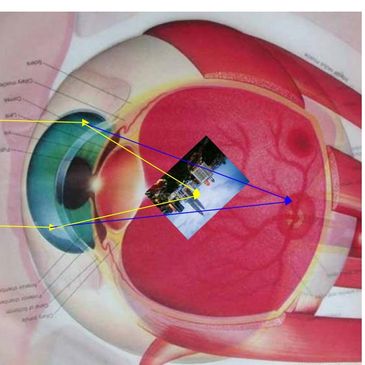Understanding Childhood Myopia

What Is Childhood Myopia?
What Is Childhood Myopia?
What Is Childhood Myopia?
Myopia, which is a condition where distant objects appear blurred while near objects remain clear, is a significant concern for childhood vision. In children, this condition often arises due to excessive axial elongation, where the eyeball grows too long. A normal child’s eye grows steadily until the late teenage years, but in cases of my
Myopia, which is a condition where distant objects appear blurred while near objects remain clear, is a significant concern for childhood vision. In children, this condition often arises due to excessive axial elongation, where the eyeball grows too long. A normal child’s eye grows steadily until the late teenage years, but in cases of myopia, this growth becomes excessive and uncontrolled. This excessive elongation puts strain on the delicate tissues of the eye, including the retina, choroid, and sclera. Key Point: Myopia is not merely a refractive error; it is a disease of eye growth that can increase myopia risk and lead to long-term consequences.

Why Is Myopia Increasing?
What Is Childhood Myopia?
What Is Childhood Myopia?
There is no single reason for the rising myopia risk in children; it is a perfect storm of genetics, environment, and lifestyle. Genetics plays a significant role: if one parent is myopic, the child's risk doubles, and if both are, the risk triples. Additionally, near work and screen time contribute to this issue; hours spent on homework,
There is no single reason for the rising myopia risk in children; it is a perfect storm of genetics, environment, and lifestyle. Genetics plays a significant role: if one parent is myopic, the child's risk doubles, and if both are, the risk triples. Additionally, near work and screen time contribute to this issue; hours spent on homework, tablets, and smartphones lead to increased eye strain, which affects childhood vision. A lack of outdoor time is another critical factor, as sunlight has a protective role. Children who spend less than 1 hour outdoors daily are at a higher myopia risk. Urbanization also exacerbates the problem, with small apartments, dense cities, and insufficient natural light causing faster eye growth. In short, our children are growing up in a world that promotes myopia, making myopia control increasingly important.

Why Does It Matter?
What Is Childhood Myopia?
Why Does It Matter?
Parents often ask: “So what if my child needs stronger glasses every year?” The answer is simple: higher myopia means higher risks. A child who progresses to -5.00D or more is at increased myopia risk for conditions such as retinal detachment, glaucoma, myopic maculopathy (degeneration of the central retina), and early cataracts. These si
Parents often ask: “So what if my child needs stronger glasses every year?” The answer is simple: higher myopia means higher risks. A child who progresses to -5.00D or more is at increased myopia risk for conditions such as retinal detachment, glaucoma, myopic maculopathy (degeneration of the central retina), and early cataracts. These sight-threatening issues can lead to permanent vision loss. On a societal level, rising myopia contributes to increased healthcare costs, more dependence on corrective lenses, and decreased productivity. On a family level, childhood vision problems like myopia can affect confidence, participation in sports, and even career choices.

Treatment Options
What Is Childhood Myopia?
Why Does It Matter?
Defocus glasses, such as MyoKiddo DF spectacle lenses, play a significant role in myopia control for children. Orthokeratology (Ortho-K) is another effective method to manage childhood vision and reduce myopia risk. For those who prefer contact lenses, soft multifocal contact lenses and scleral lenses for high myopia offer comfortable opt
Defocus glasses, such as MyoKiddo DF spectacle lenses, play a significant role in myopia control for children. Orthokeratology (Ortho-K) is another effective method to manage childhood vision and reduce myopia risk. For those who prefer contact lenses, soft multifocal contact lenses and scleral lenses for high myopia offer comfortable options. Additionally, red-light therapy with the MyoKiddo RLT unit is gaining attention as a potential aid in myopia control. It's also essential to consider lifestyle and outdoor time recommendations to further mitigate myopia risk in children.
Copyright © 2025 MYOKIDDO.COM - All Rights Reserved.
This website uses cookies.
We use cookies to analyze website traffic and optimize your website experience. By accepting our use of cookies, your data will be aggregated with all other user data.